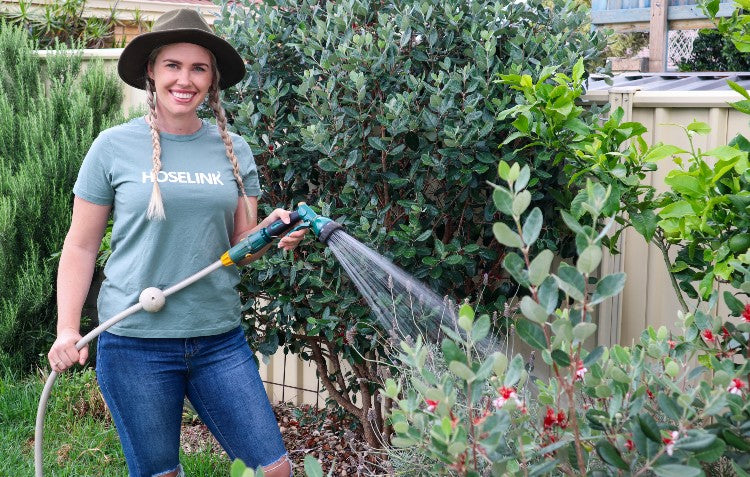Feijoas, more commonly known as pineapple guavas, are fruit trees bearing delicious green-skinned, tropical-tasting fruits. They are my absolute favourite tree in the garden for so many reasons! Feijoa trees have lush evergreen foliage with matte green and silver leaves. They not only make a great edible tree but they’re also a fantastic addition to any ornamental garden.
Feijoa trees are hardy, pest resistant, drought tolerant and are even known to have fire retardant qualities! So planting these near your home can be a beneficial addition to your garden design. Most importantly though, they produce an abundance of delicious, fragrant fruit. I love feijoa trees and would highly recommend them for any home garden.
Here are a few of my top tips for growing this amazing fruit tree:
Choosing a variety
You can find the common variety of Acca Sellowiana at many plant stores and nurseries. Though this species is self-pollinating it is recommended to have multiple trees for improved pollination. As it is grown as a seedling, it can take a lot longer to fruit. If you can, I would highly recommend doing your research and finding a named variety or grafted tree at your local nursery or fruit tree specialist. The named varieties often produce better yields more quickly as well as larger, tastier fruits. Looks for varieties such as ‘Duffy’, ‘Unique’, ‘Apollo’ and ‘Mammoth’ just to name a few. Each has unique qualities and can differ slightly in fruiting times, so if you love these as much as I do, you could get a few varieties and maximise your fruiting season.


Fertiliser Spray Mixer
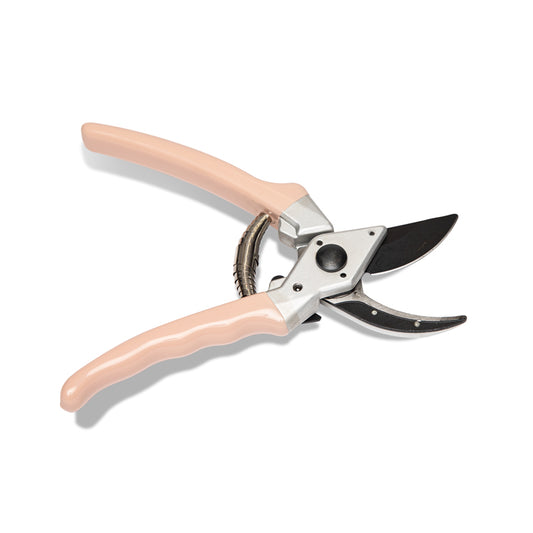
Secateurs 225mm | Peach
Where to plant?
The great thing about growing feijoas is that they’re very hardy and can handle a wide range of conditions. For best quality fruiting they require up to 50 chill hours. They prefer cool winters and moderate summers. Temperature can affect the taste of the fruit. Plant feijoas in a sunny, well-drained spot and give them plenty of compost to get started. Planting in autumn or winter is ideal as it allows them to establish their roots ready for peak growth in spring. Give your new trees a good water with Hoselink’s Seaweed Tonic to help with transplant shock and give them a boost of energy to get started.
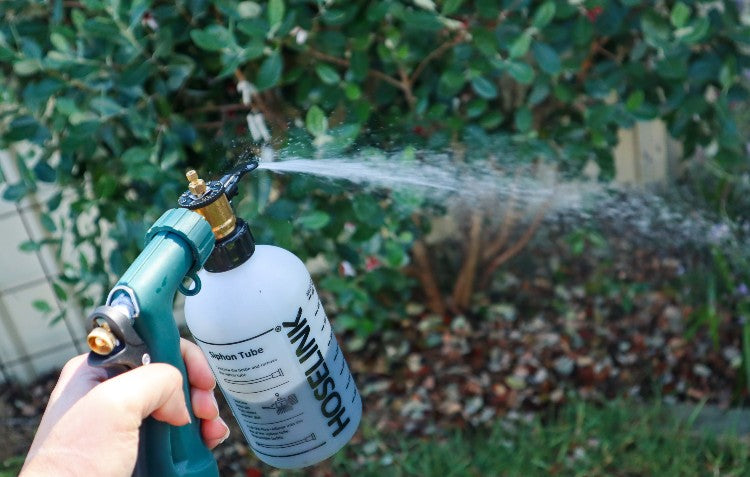
Feijoas can grow up to 5m but they can be pruned to keep to your desired height. They can also be grown as a hedge. They can then be shaped and will give you a very good, thick screening hedge. Hedging feijoas may not produce as well as standalone trees, but with multiple trees you will have more than enough delicious fruit!
As they are fire retardant, creating a hedge in fire zones that block houses and sheds could be a great option. Keep in mind, feijoas are not huge fans of windy conditions, so plant ideally somewhere with a bit of shelter.
Feijoas can also be planted in large pots making them a fantastic option for an urban garden. Just ensure they get a good feed of Hoselink Seaweed Tonic, worm tea or compost regularly.
How to care for your feijoas
One of the many reasons I love feijoas is that they are very easy to grow! They are hardy and quite drought tolerant; however, to get good fruit production it is important they get adequate water during the flowering and fruiting seasons (spring and summer). Give them lots of compost and composted manure and keep the base weed-free and mulched. They have a shallow root system with feeder roots around the dripline of the tree. I always give my feijoa a good water with seaweed solution just before and after they fruit.
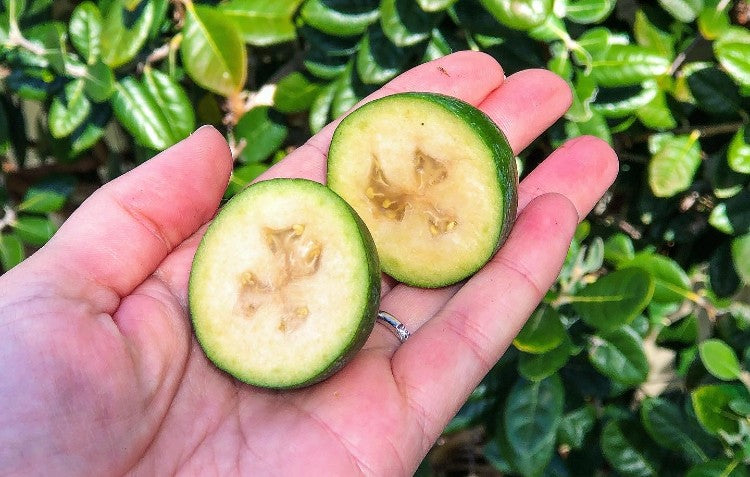
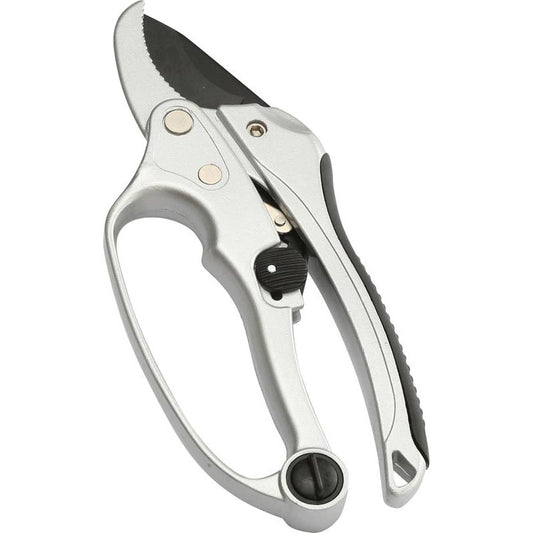
Ratchet Pruners

Ratchet Pruners
Pollination and fruiting
Bees are one of the top pollinators for feijoas so it is a great idea to plant flowering shrubs nearby to attract them. I have lavender planted in between my trees as they flower at the exact same time as my feijoas in spring and attract lots of pollinators. Small birds will also come to eat the petals and pollinate the fruit. Don't be alarmed as they will usually only eat the fragrant outer petals and leave the centre base, which is the fruit. The petals are also edible for us and have a delicate strawberry flavour.

In some areas, fruit fly can be an issue. If you have fruit fly in your area it may pay to net or bag your fruits to ensure a successful harvest. The birds don't tend to find the fruit as they are green and well hidden in the foliage.
Feijoa’s beautiful scarlet flowers will usually appear in spring and the fruit will be ripe and ready around autumn. Trees that are just starting off may take up to three years to start fruiting, but once they do you will have bucket loads!
Maintenance and care
Feijoas will put out heaps of new growth in early spring just before they flower and this can often mean they will get quite large. Feijoas don't mind a good prune but make sure you do it after they have finished fruiting. This is often in late autumn or early winter. Use Hoselink’s 2-in-1 Hedge Shears to cut back up to a third of the growth. Use the Hoselink Loppers for any of the thicker branches. It can be a good idea to prune the bottom branches off and some from the centre to allow good airflow and pollinators access to the centre of the tree. I wouldn’t start pruning your tree until it is 3-4 years old or nearing your desired height. Use the clippings as mulch or compost to put the organic matter back into your garden.
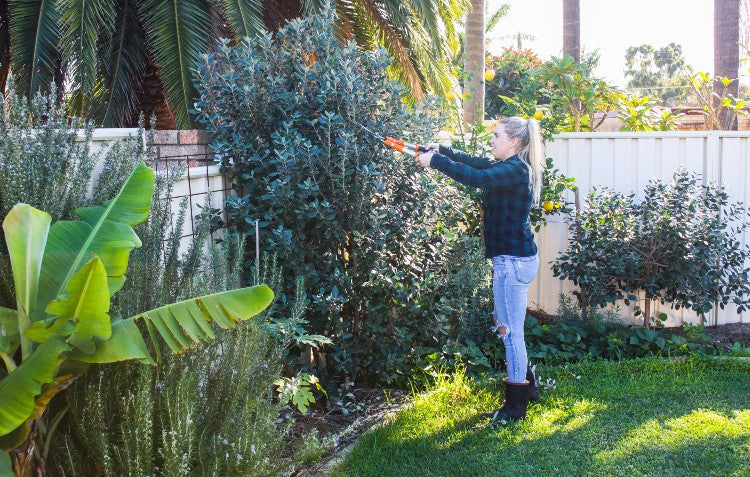

Ratchet Pruners

Ratchet Pruners
How to tell when feijoa fruits are ripe
Although the feijoa fruit remains green, it is actually very easy to tell when they are ripe! When the fruit is ripe it will just fall from the tree, so it is important to check under the tree regularly during the fruiting season. Feijoas will continue to ripen off the tree so it is best to eat them fresh and as they fall. I like to eat my fruit when there is still a little bit of tartness; if you hold the fruit in your hand and gently pull it will come off if it is ready. If it doesn't fall into your hand it’s not quite ready.
Did you know you can eat the whole fruit? I love the taste of the tart skin in combination with the sweet, tropical flesh.
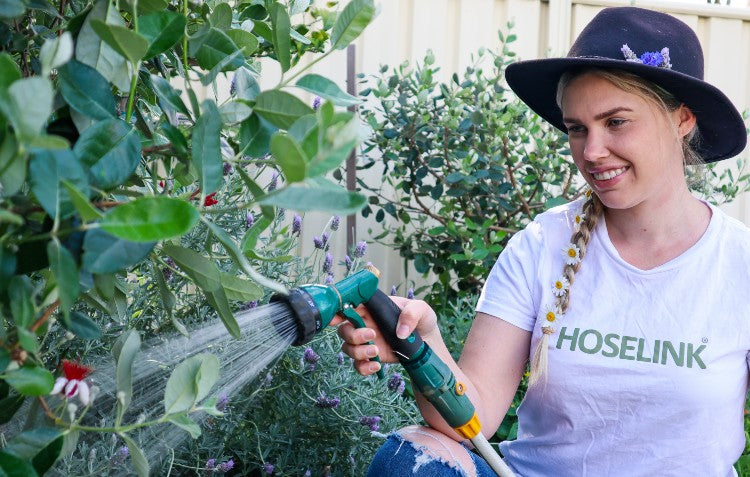
Uses and preserving
The best way to eat feijoa fruits is fresh off the tree. Once your tree takes off, it will be a generous fruiter, especially if you have multiple trees. Gifting fruit to friends and neighbours is a great way to share and trade your produce.
There are also plenty of other ways to use and preserve your feijoas so you can enjoy them all year round:
- Jams and chutneys
- Feijoa wine or liqueur
- Cakes and baking
- Stewed fruit
- Feijoa juice and smoothies
With their evergreen foliage, hardy drought tolerant qualities and delicious tasting fruit, feijoas make a great addition to any home garden.

